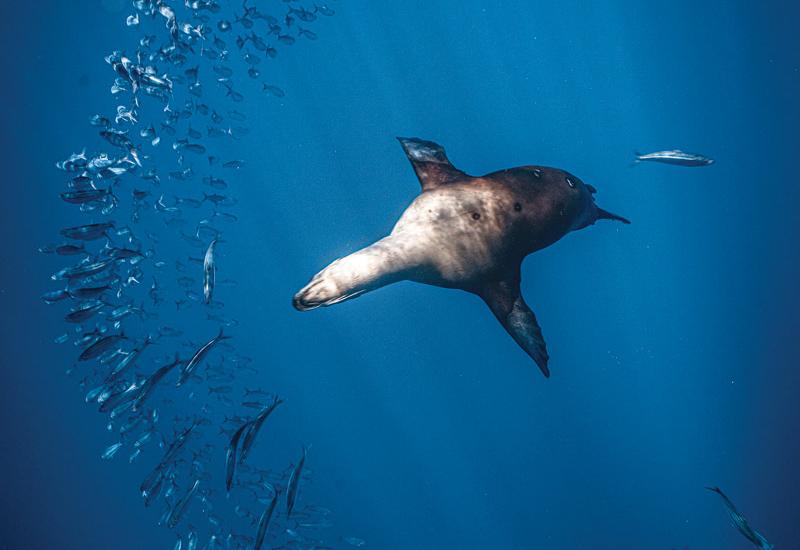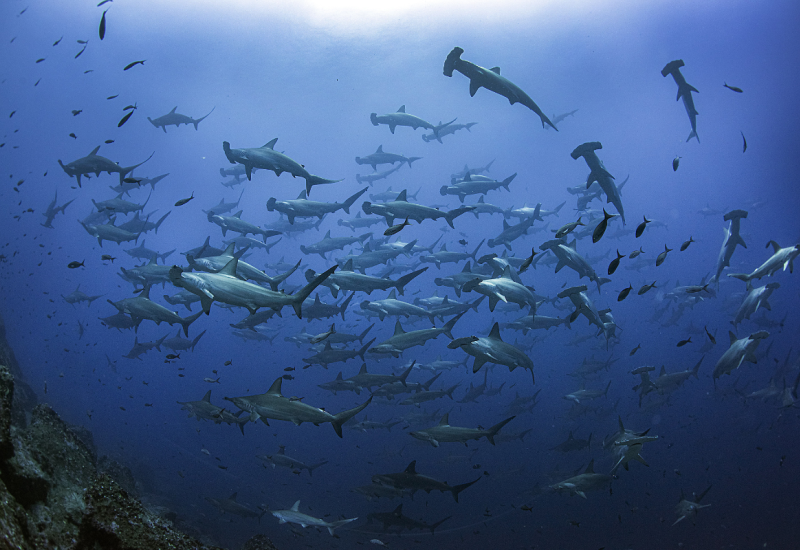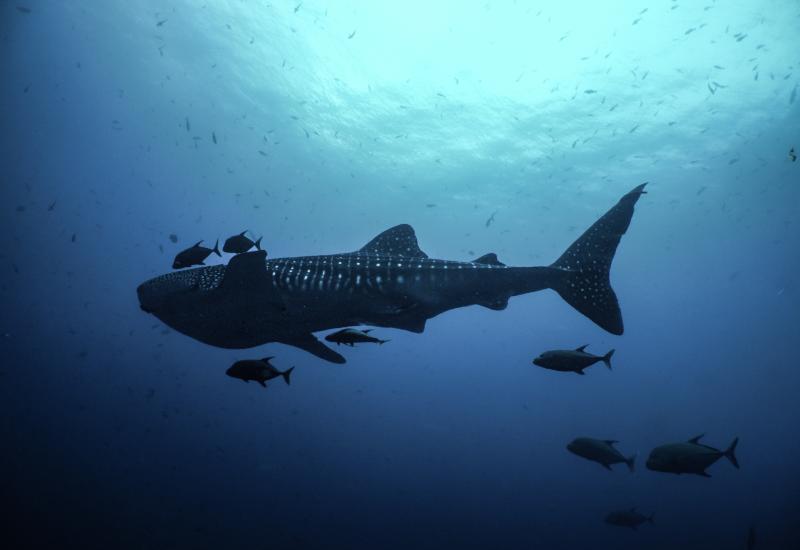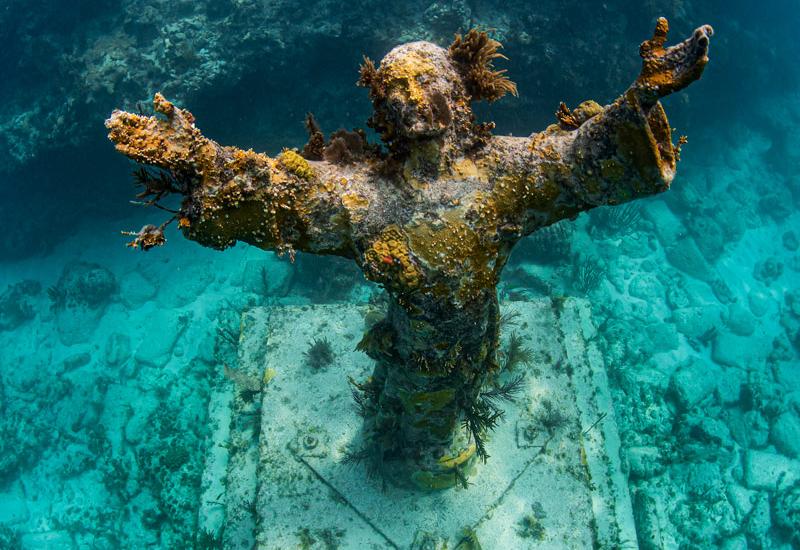The Charismatic Animals You Can Only Dive With in the Galapagos
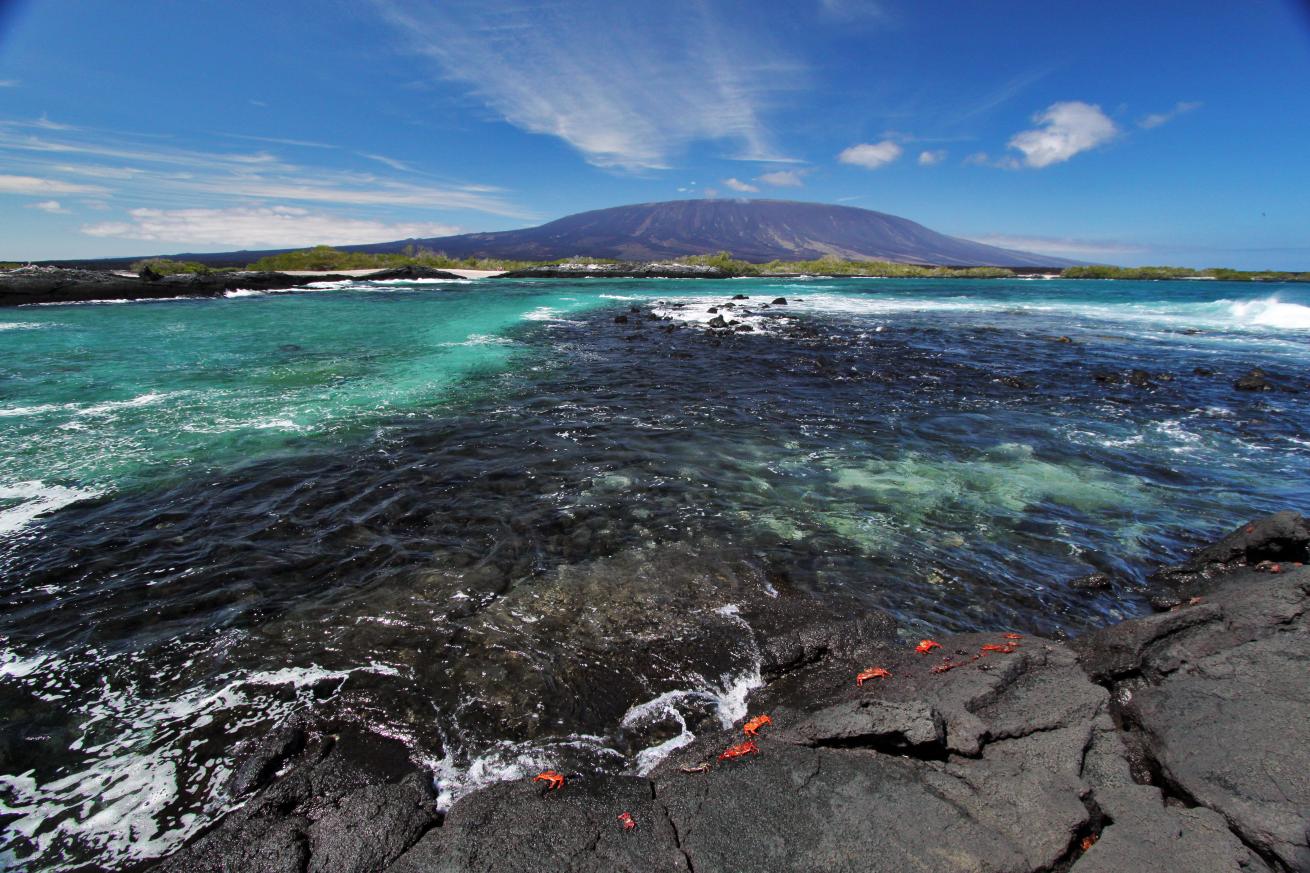
EcoventuraFernandina Island is the third largest island of the Galapagos Islands.
“This is the true Galapagos,” divemaster Max Castillo told us as we arrived at Fernandina, the archipelago’s youngest and westernmost island. We’d just wrapped up three full days at the iconic Darwin and Wolf on board Galapagos Sky, where we experienced some of the sharkiest and most epic diving the ocean has to offer. While Castillo’s infectious passion for his homeland and its wildlife was impossible to ignore, it left many of us sincerely wondering: What could possibly be as good as a cloud of one hundred scalloped hammerheads?
We were about to discover that the Galapagos are magical for another reason; they're endowed with some of the highest levels of endemism anywhere on earth, due in part to their geographical isolation, diverse land conditions and converging, nutrient-rich currents. The Galapagos Marine Reserve boasts nearly 3,000 marine species, roughly 20% of which are found nowhere else. Divers can cruise along the sand searching for speckled Galapagos snake eels and “croaking” Galapagos sea robins, losing themselves (and their buddy) in schools of black-striped salema so big they turn into an aquatic maze—and that’s just the beginning. Here are some of the top animals you can only dive with in the unique and wonderful Galapagos.
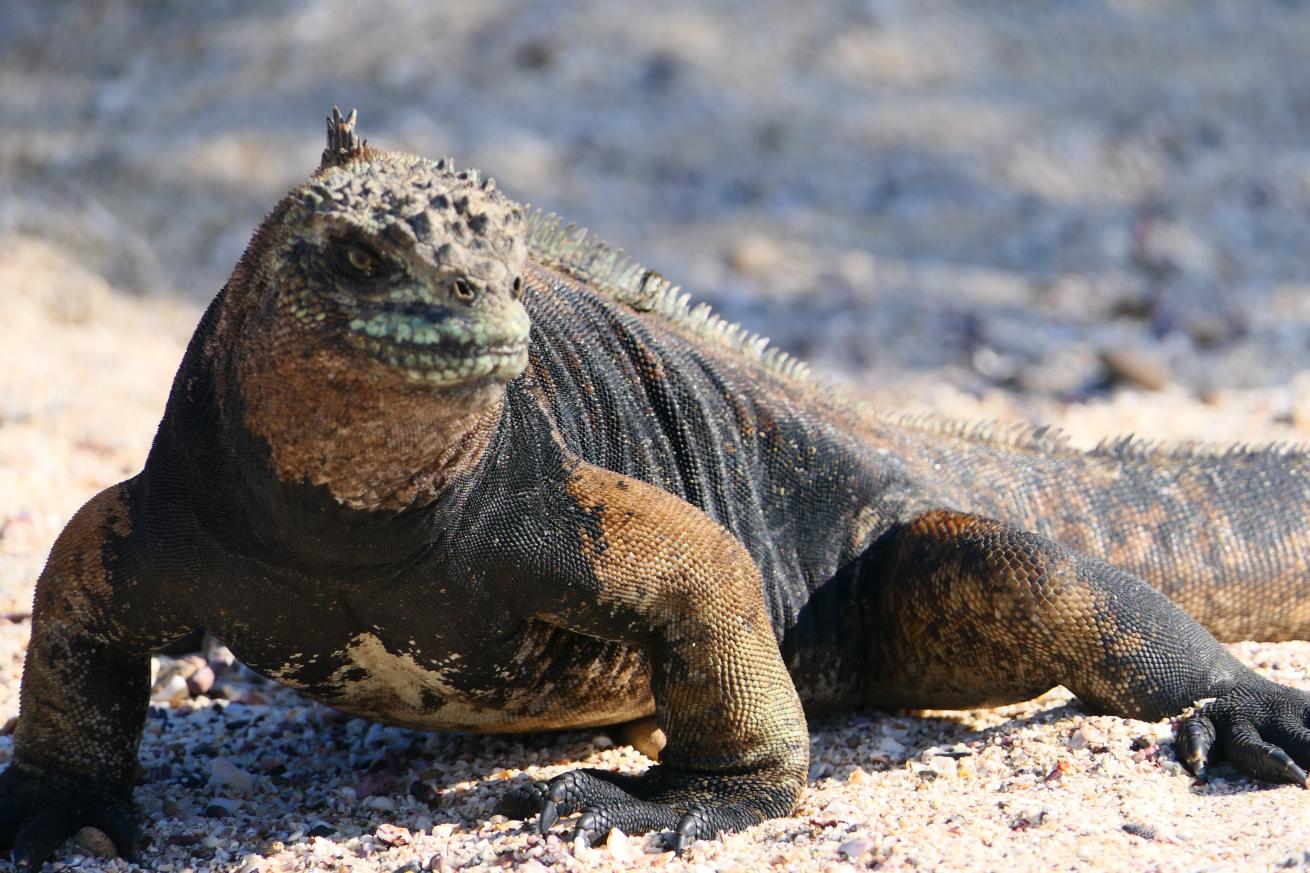
Alexandra OwensMarine iguanas are the only sea-faring lizard in the world.
Marine Iguana
The only sea-faring lizard in the world, marine iguanas can stay submerged for up to 30 minutes in order to feed on the algae covering underwater rocks. While various subspecies are found throughout the Galapagos—including the red and green “Christmas” iguana of Española Island—the best place to dive with them is at Capo Douglas on the eastern side of Fernandina. There, droves of the cold-blooded reptiles journey into the ocean each day after basking in the sun to get their body temperature up. We watched them for nearly an hour, sinking no deeper than 15 feet, as they grazed and gripped their sizable claws into the slippery boulders. Occasionally, one would effortlessly propel itself to the surface with its flattened tail—looking more than a little like a tiny Godzilla—putting us all to shame as we fumbled around in the heavy surge.
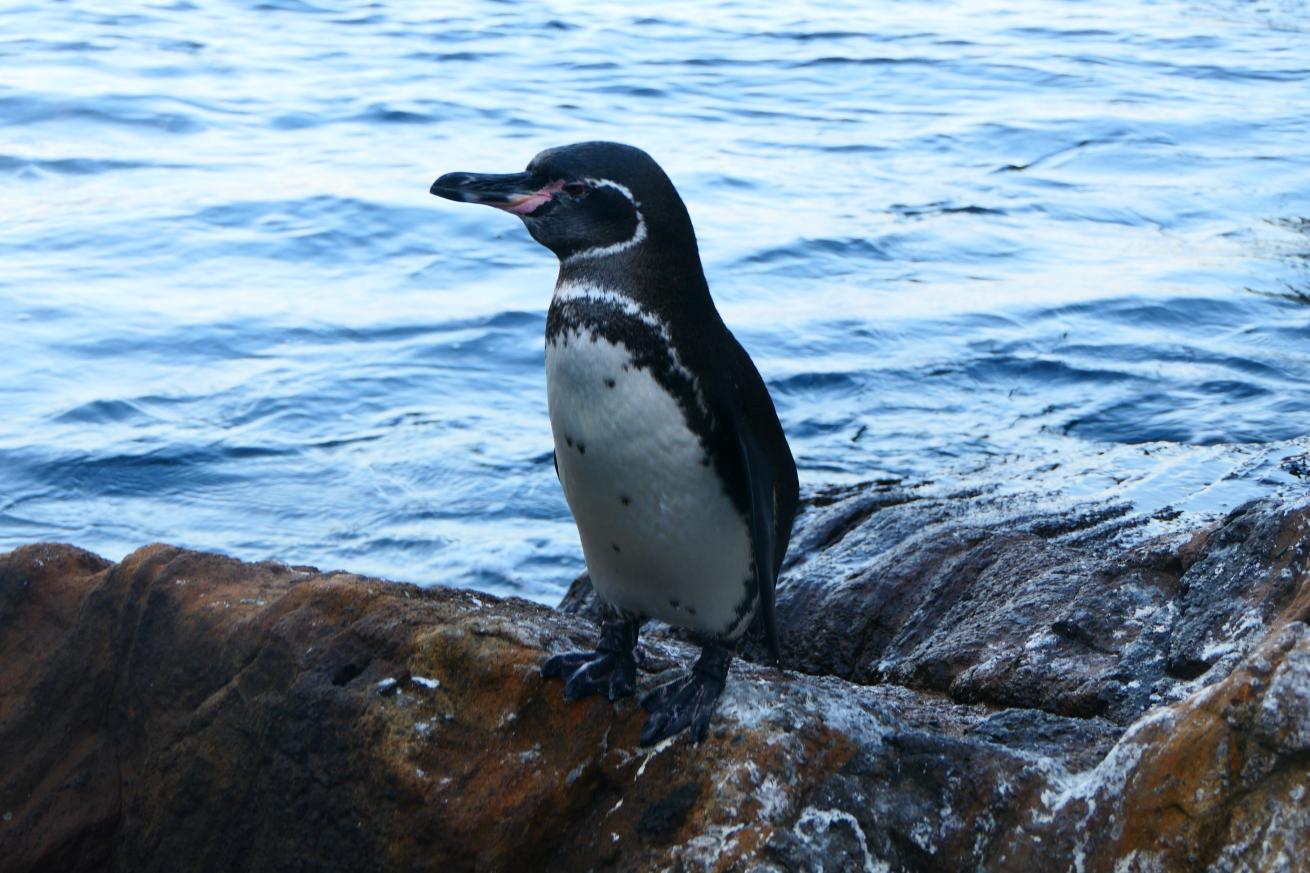
Alexandra OwensThe Galapagos penguin is the only penguin found north of the equator.
Galapagos Penguin
If you want to dive with penguins without a drysuit, the Galapagos is the place to do it—it’s home to the only species found north of the equator. Thought to be closely related to Chile’s Magellanic penguin, these penguins adapted by losing their fat and becoming even smaller. However, you can’t take the Antarctic completely out of the bird; the biggest Galapagos colonies are found on the western islands of Fernandina and Isabela where the Humboldt Current keeps water temperatures chilly year-round. Another favorite spot to snorkel with Galapagos penguins is Bartolome Island, where I traveled with Galapagos Sky’s sister expedition yacht, Ecoventura Evolve. Reaching up to 22 miles per hour underwater while hunting, they proved to be engrossing creatures, though next-to-impossible photography subjects.
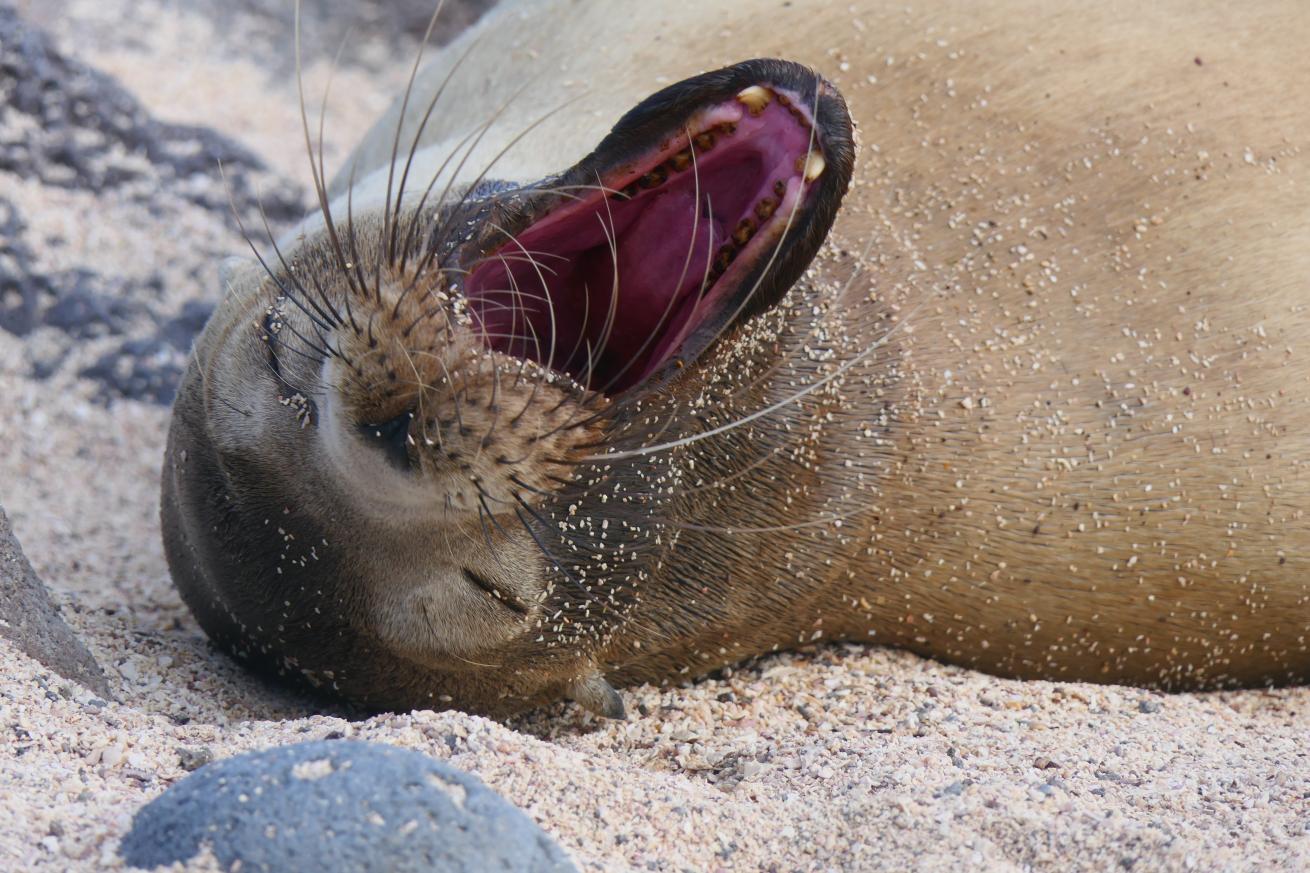
Alexandra OwensThe smallest of the sea lion species, the Galapagos sea lion is known for its charisma and playfulness.
Galapagos Fur Seal and Galapagos Sea Lion
Well-known for their beloved bench-hogging sea lions, the Galapagos actually have two types of pinnipeds clowning around their shores. But unlike the sea lions, which have started a small colony on Isla de la Plata just off mainland Ecuador, Galapagos fur seals—the smallest in the family of otariids (eared seals)—are truly endemic. It can be tricky to tell the species apart, particularly underwater when their coats are wet; one telltale sign is that fur seals have bulging eyes reminiscent of a Pokémon character. Regardless of their differences, both lived up to their reputation for playful antics, nipping at divers’ fins, twirling through bubbles, and giving us the safety stops of our lives.
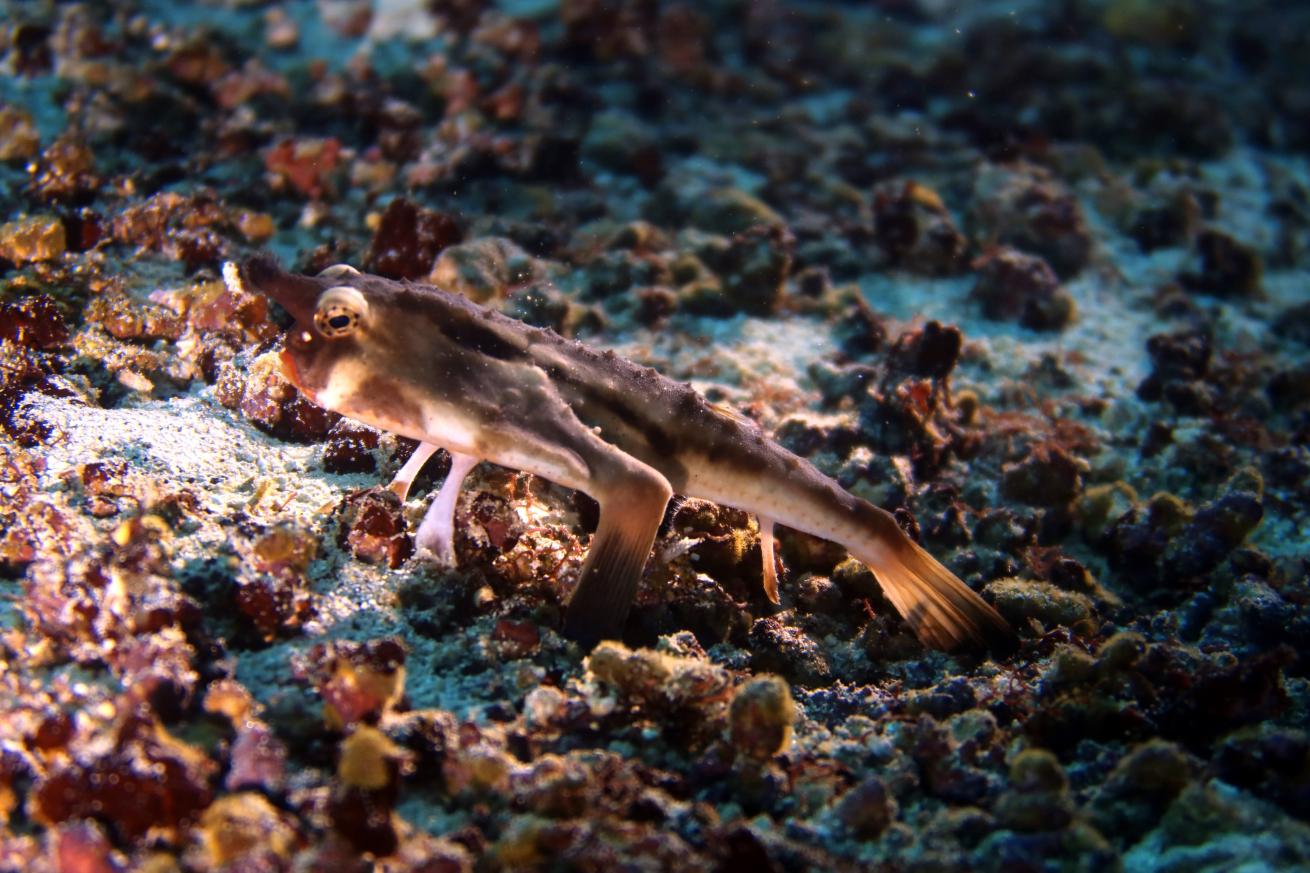
Alexandra OwensIf lucky, you’ll see the red-lipped wonder underwater.
Red-Lipped Batfish
Decked out with a vermillion pucker that resembles plastic surgery gone wrong, the aptly named red-lipped batfish is one of the strangest (and most popular) sights for divers in the Galapagos. While this bizarre-looking bottom dweller technically isn’t endemic—it also lives in the ocean around the archipelago—for all practical purposes, the islands are the only place to see one. Our group found several at dive sites around Isabela and Fernandina, as well as at Pinzón. We tracked them as they walked and perched on the seabed using its pseudo-legs, taking in every detail from their triangular body to their illicium, a sort of “fishing pole” on their head that’s believed to lure in prey.
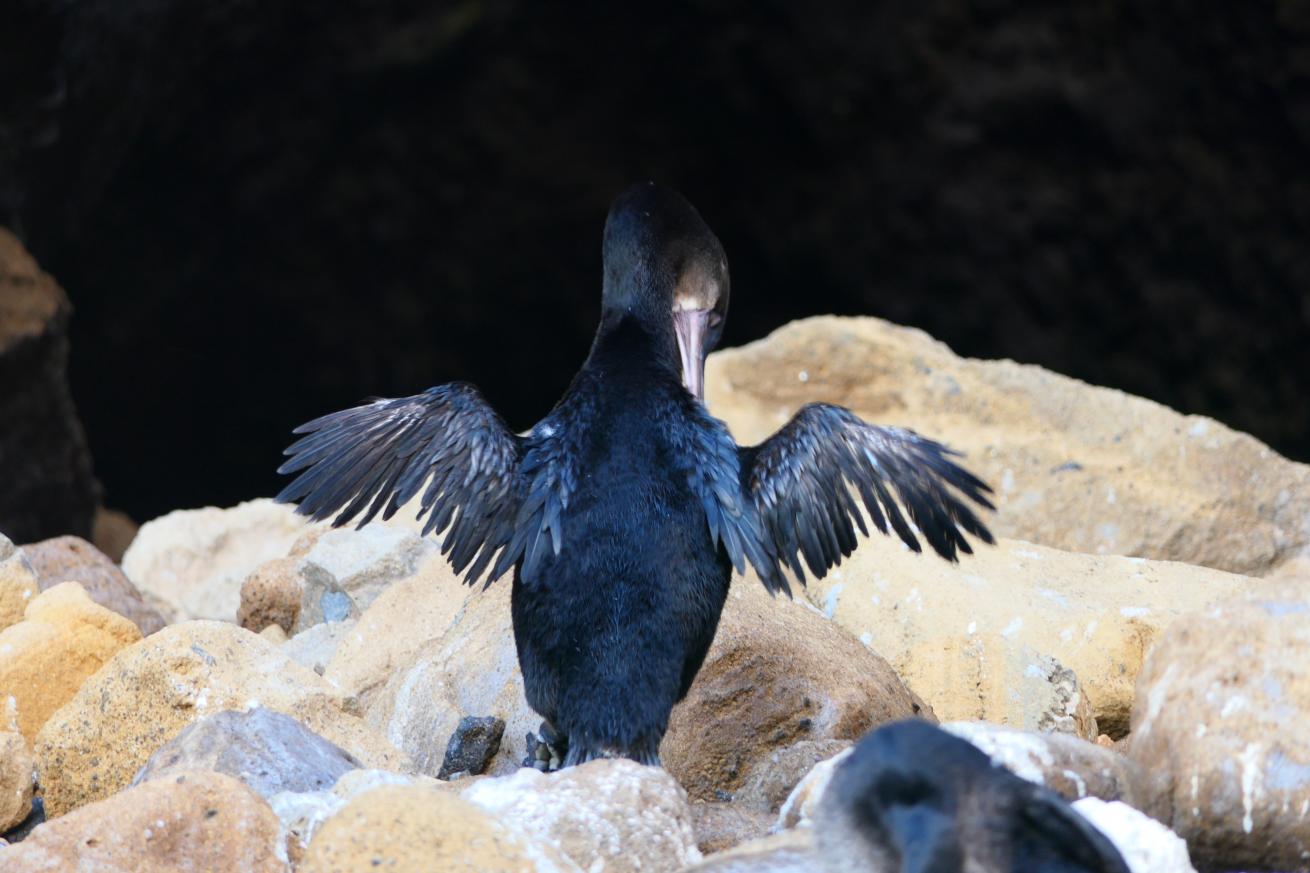
Alexandra OwensThe Galapagos flightless cormorant is the heaviest cormorant species and the only one out of the 29 that cannot fly.
Flightless Cormorant
Unlike other members of the cormorant family, these unusual seabirds have lost the ability to fly, confined to the coastlines of Fernandina and Isabela. Instead, with stunted wings and webbed feet, they are better suited to swimming, typically diving to around 45 feet, but going as deep as 260 feet to spear an eel or octopus with their sharp beak. “They are our competition,” joked Castillo. With around 1,000 breeding pairs left, a diver is lucky to see one underwater, where they use their powerful hind legs to kick rather than “flying” like penguins.

